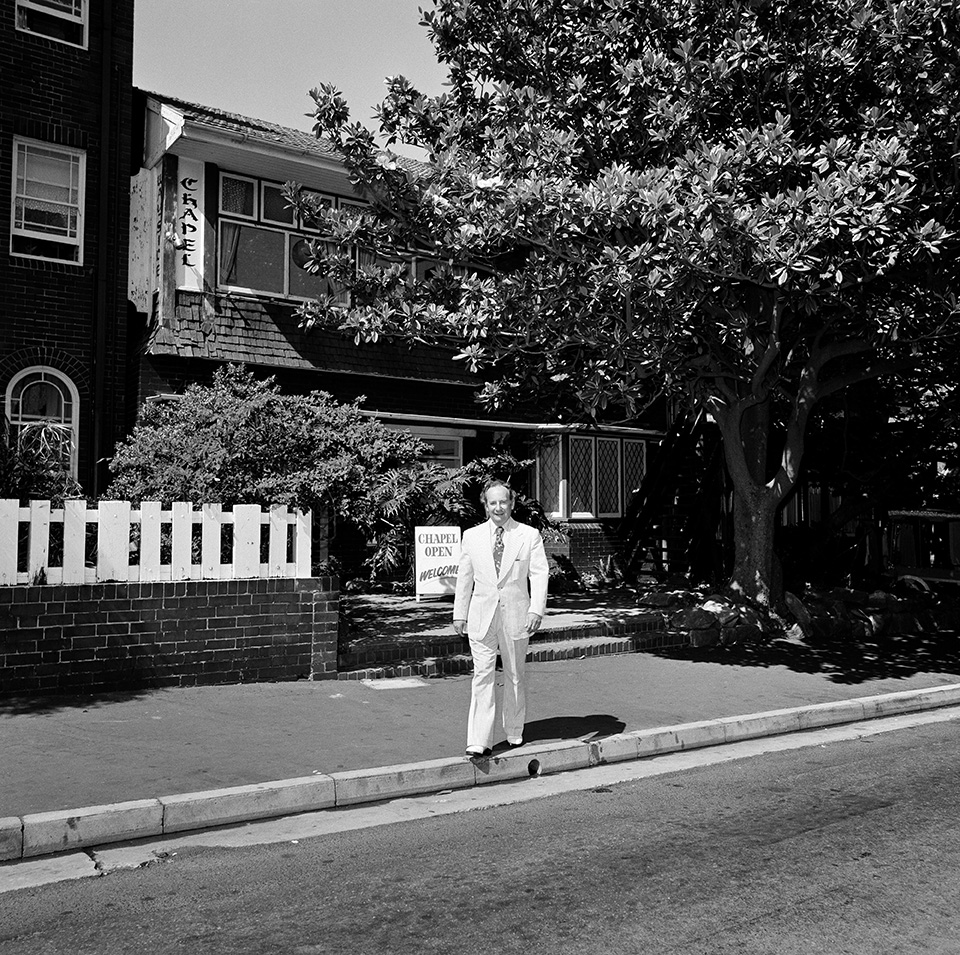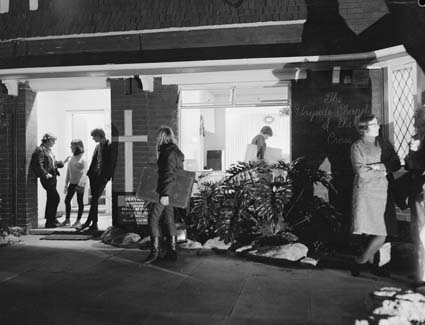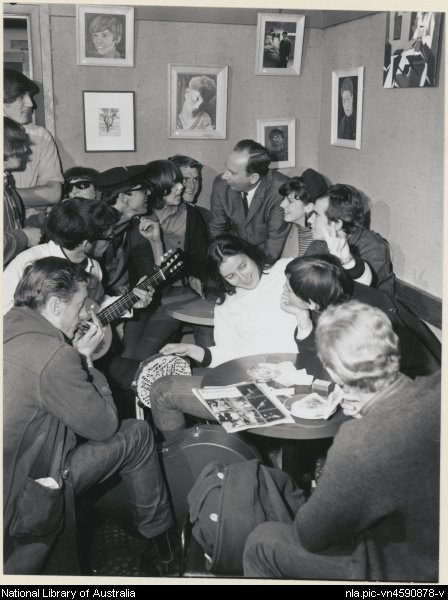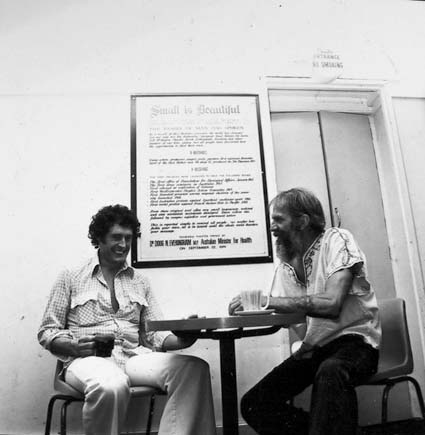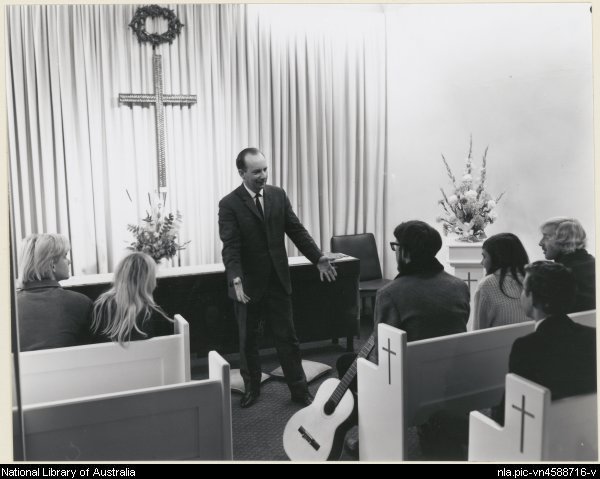The Dictionary of Sydney was archived in 2021.
Wayside Chapel
Citation
Persistent URL for this entry
To cite this entry in text
To cite this entry in a Wikipedia footnote citation
To cite this entry as a Wikipedia External link
Wayside Chapel, Kings Cross
The Wayside Chapel in Kings Cross is [media]synonymous with the work of the Reverend Ted Noffs. He moved to Kings Cross in 1963, taking up the ministry for the local Methodist parish. Within a few months of arriving, Noffs realised that the congregation was limited and many residents of the Cross were not interested in religion. Others were openly hostile to the ideas of the church. Noffs was keen to try something new and discussed the option of opening a coffee house above the chapel, as a place where people could come to sit and discuss ideas and issues.
[media]The chapel was located in a block of flats in Hughes Street. With help from [media]local 'beatniks' such as Charles Perkins and Norman and Ruby Thomas, the upper room of the building was converted into a meeting place. Noffs called it the Wayside Chapel, after a small chapel he had preached at in the Black Hills of Dakota. [1] It was part of his philosophy that all obstacles to people coming to church should be removed, and so Noffs had the front fences demolished and large windows inserted in the ground floor. The inside of the church could now be seen from the street. The upper room opened on 24 March 1964, and the first office of the Foundation for Aboriginal Affairs was housed there.
The chapel and the [media]coffee house operated independently, and developed different groups of people who visited. The coffee house became a beatnik hangout which attracted concerned attention from the media and the traditional church. Nevertheless, the coffee shop was popular and continued to grow throughout the 1960s and 1970s. Many volunteers, including Charles Perkins, Maggie Tabberer and Bill Crews helped to run the business. [2]
It was [media]during this time that the Wayside Chapel began confronting the social issues that beset the area. A crisis centre opened in 1965 to deal with the growing number of drug addicts and overdoses occurring in the Cross. This was followed in 1967 by the Drug Referral Centre, one of the first in the area, and the establishment of the magazine Now, later edited by Juanita Nielsen. The crisis centre and drug referral centre were joined by the Life Education Centre from 1974. This was an education program designed to guide and encourage young people in making good life choices. Drug awareness issues were also dealt with here.
In 1987 Ted Noffs suffered a [media]major stroke and was forced to withdraw from his work at the chapel. The work of outreach for addicts and the youth of the Cross continued with the establishment of the Ted Noffs Foundation, which eventually became a separate organisation.
Ted Noffs died on 6 April 1995, yet his legacy lives on. Today, the Wayside Chapel continues to operate an outreach centre, youth programs and the coffee shop.
Notes
.



